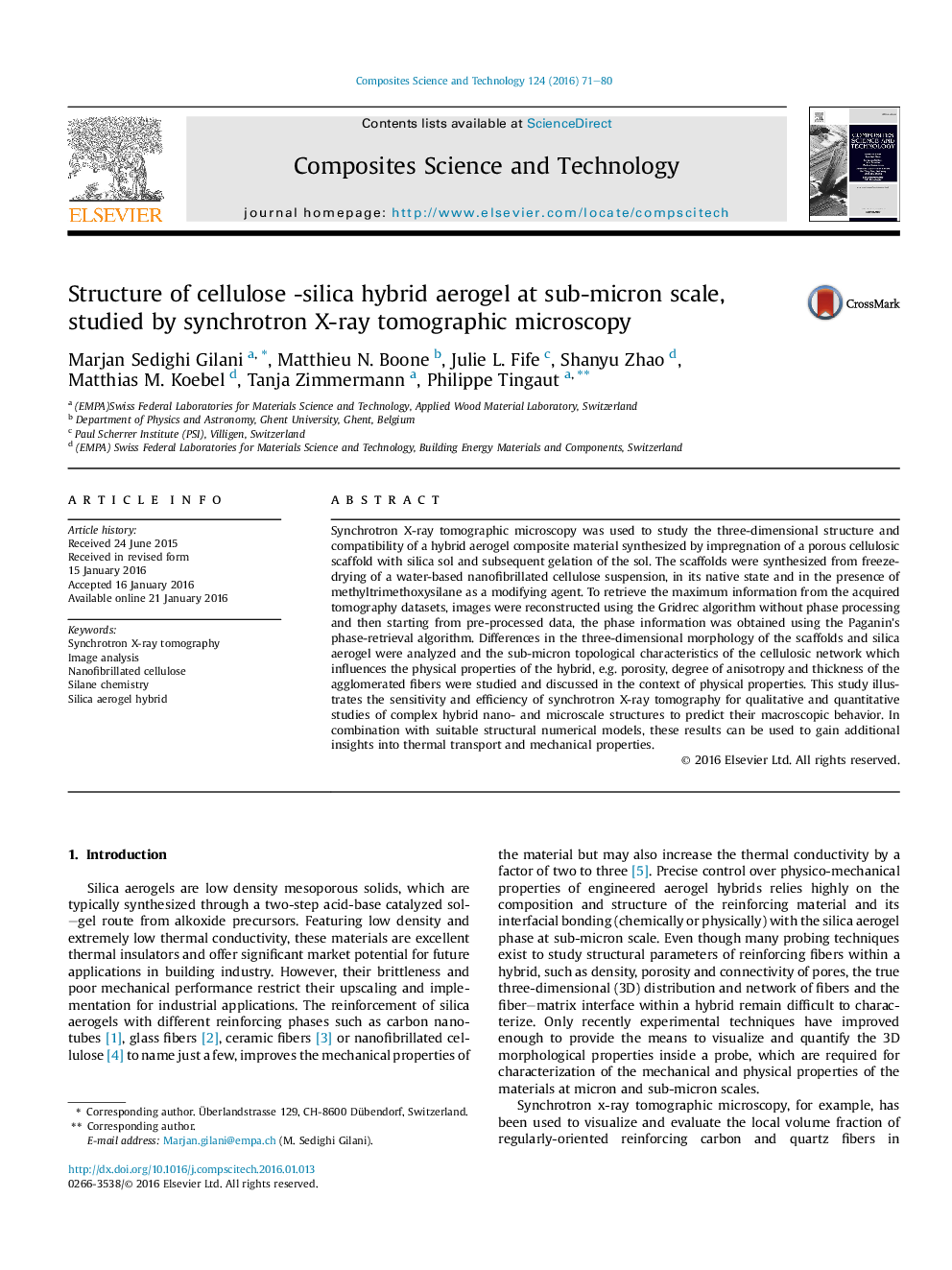| Article ID | Journal | Published Year | Pages | File Type |
|---|---|---|---|---|
| 820025 | Composites Science and Technology | 2016 | 10 Pages |
Synchrotron X-ray tomographic microscopy was used to study the three-dimensional structure and compatibility of a hybrid aerogel composite material synthesized by impregnation of a porous cellulosic scaffold with silica sol and subsequent gelation of the sol. The scaffolds were synthesized from freeze-drying of a water-based nanofibrillated cellulose suspension, in its native state and in the presence of methyltrimethoxysilane as a modifying agent. To retrieve the maximum information from the acquired tomography datasets, images were reconstructed using the Gridrec algorithm without phase processing and then starting from pre-processed data, the phase information was obtained using the Paganin's phase-retrieval algorithm. Differences in the three-dimensional morphology of the scaffolds and silica aerogel were analyzed and the sub-micron topological characteristics of the cellulosic network which influences the physical properties of the hybrid, e.g. porosity, degree of anisotropy and thickness of the agglomerated fibers were studied and discussed in the context of physical properties. This study illustrates the sensitivity and efficiency of synchrotron X-ray tomography for qualitative and quantitative studies of complex hybrid nano- and microscale structures to predict their macroscopic behavior. In combination with suitable structural numerical models, these results can be used to gain additional insights into thermal transport and mechanical properties.
